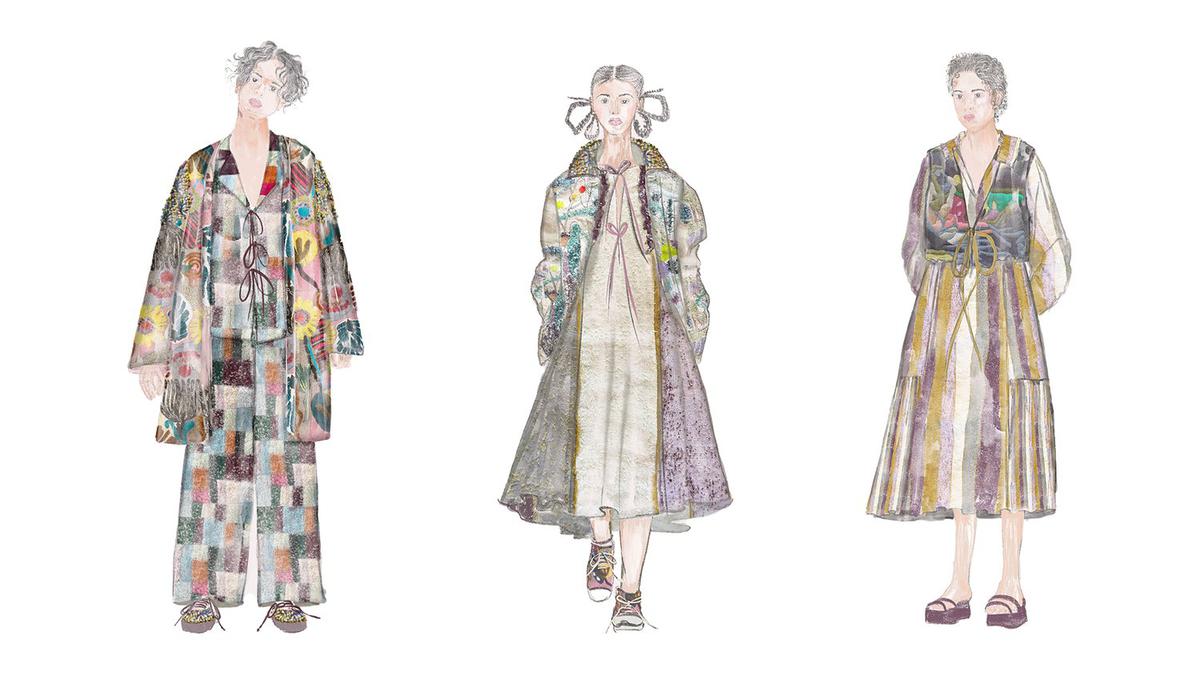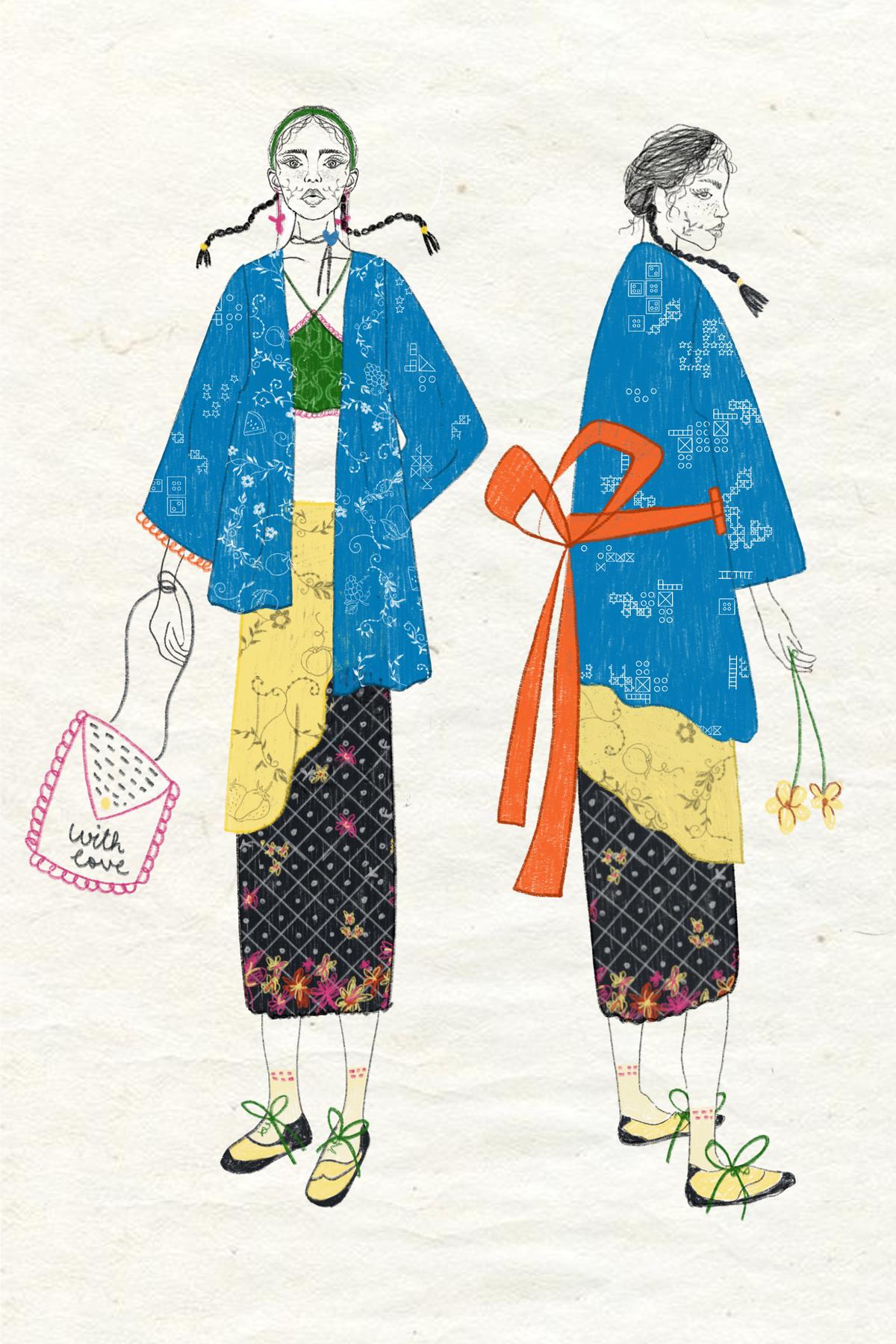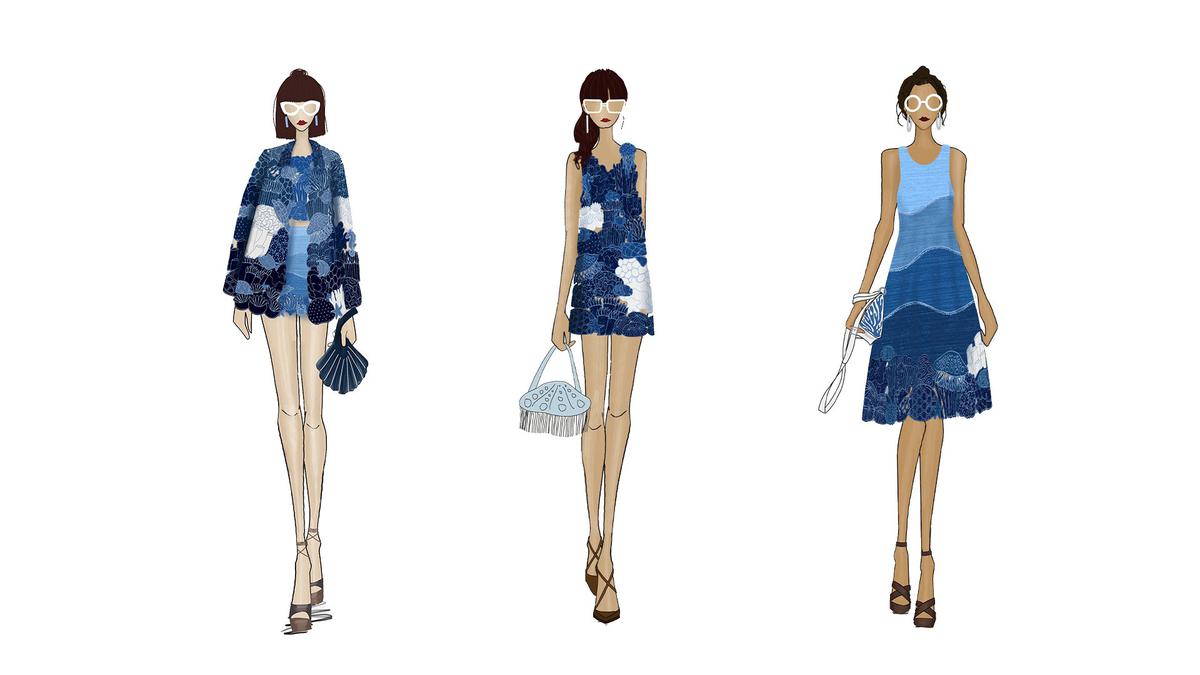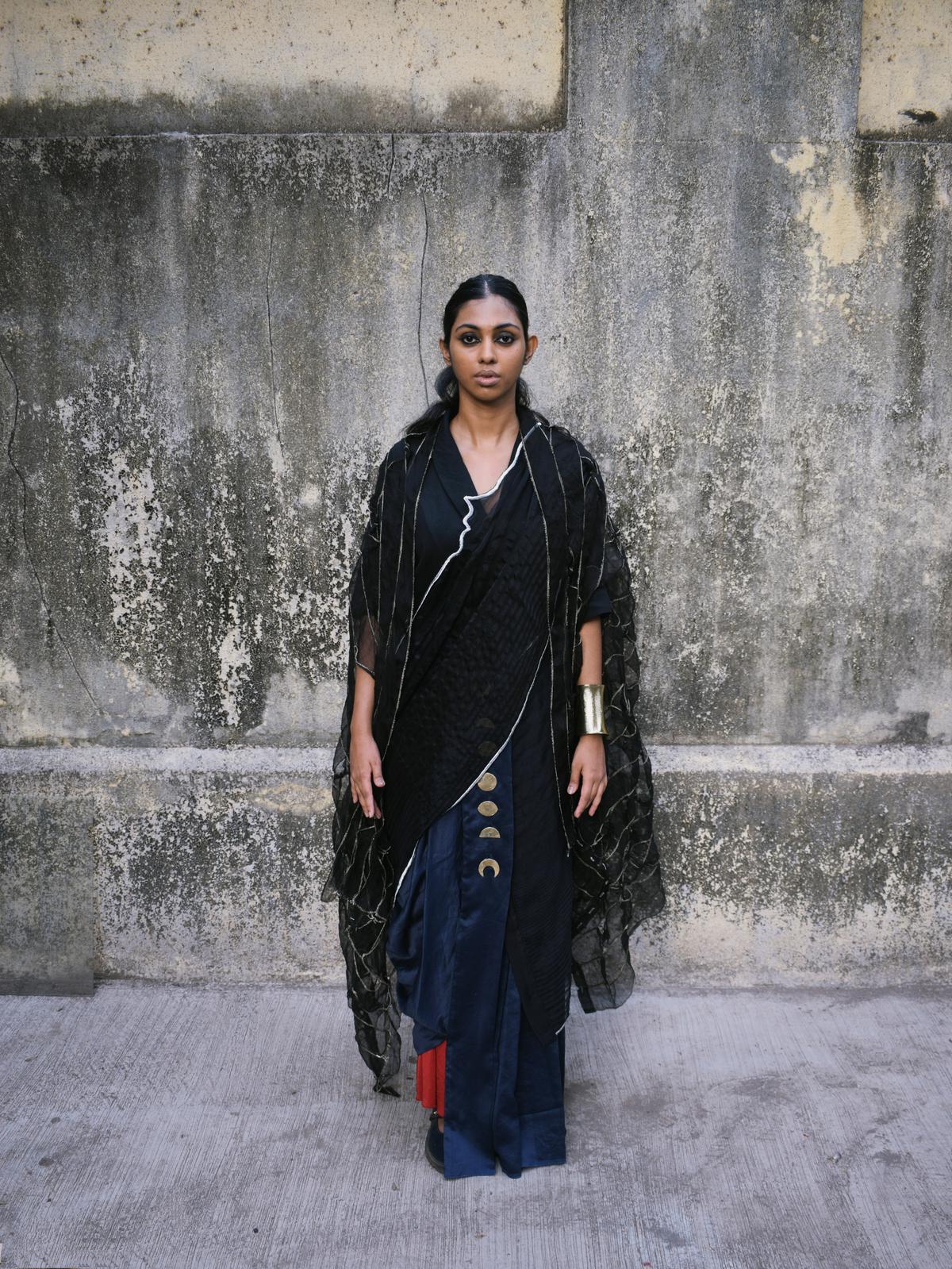Recycled turbans turn couture, courtesy designer Pavneet Kaur who is one of the 10 finalists at the Redress Design Award 2023 that was announced recently.
The much-awaited sustainable fashion award by the environmental charity headquartered in Hong Kong aims to ‘educate and empower designers and consumers to reduce clothing’s negative impact on the environment, thereby accelerating a change in the circular fashion industry’.
This year, the team received entries from 46 countries, and the 30 semi-finalists feature four Indians. Today, the finalists will showcase their collections at the Grand Final Fashion Show in Hong Kong.

Pavneet Kaur
| Photo Credit:
Special Arrangement
Pavneet Kaur, finalist
Hailing from a Sikh family in Dhampur, Uttar Pradesh, Pavneet was used to the Sikh men around her wearing turbans every day. What she could not get used to was the linked textile waste. “I used to see many five-metre-long turbans discarded by my father and brother. I started collecting them from my home and from relatives to create textile art using creative techniques such as appliqué and kantha,” says Pavneet, 25, whose latest collection Eutopia, for Redress, features outfits from these very discarded turbans.
The collection — comprising dresses, shirts, and jackets “for all ages and sizes” — is inspired by the Solarpunk movement’s (the sci-fi, social movement that marries the environment with technology) emphasis on blending Nature with the positive and optimistic vision of the future, explains Pavneet, adding how Eutopia uses the cut-and-sew technique where the fabric is patched and appliquéd together. “The material from the turbans, made of cotton and silk, is double-and triple-layered for durability,” says the designer who holds a Postgraduate Diploma in Fashion Design from Pearl Academy’s Delhi-West campus.

Conceptual sketches from Eutopia
| Photo Credit:
Special Arrangement
The silhouettes, she says, are “timeless and oversized to fit every size and shape”. This collection is a sharp contrast from her earlier collection ‘Beauty in Mundane’, which was inspired by the damp walls in a rented house in New Delhi. “The Idea was to upcycle silk saris and wool waste using the nuno felting technique. This collection was also selected for Woolmark India Awards 2019,” says Pavneet who will explore zero-waste patterns and screen printing techniques for her upcoming collection “inspired by Indian cities”.

A conceptual design by Apoorva Dudeja
| Photo Credit:
Special Arrangement
Heirloom saris: Apoorva Dudeja, semi-finalist
Saris painstakingly sourced from family members form the core of Apoorva’s collection, Saath. She says the concept revolves around exploring cultures and the importance of being together, which Apoorva’s mother and her four aunts instilled in her as a child. “I intended to combine diverse repair and upcycling techniques from several countries to build the core of my collection. Everyone’s contributions become a piece of the quilt, patchworked together for a brighter future. The initial purpose of these techniques to solve the issue of textile scarcity has now shifted to tackle the issue of textile abundance,” says the 24-year-old designer who sourced cotton and acrylic net fabric from a recycling factory.

Apoorva Dudeja’s collection, Saath, revolves around exploring cultures and the importance of being together
| Photo Credit:
Special Arrangement
Explaining the reconstruction and upcycling strategies followed in the collection that comprises dresses, jackets, skirts, shirts, blouses, tops, and pants, Apoorva says “elements of layering, reversibility, and attach-detach design were added to allow the wearer to engage, experiment and exchange with others”.
While collecting the saris, she says no colour palette was in mind, but the range turned out to be vibrant. “It features contrasting colours including whites, oranges, greens, blacks, blues, and yellows, she says of the silhouettes that range from fitted to boxy and exaggerated.
Apoorva Dudeja’s mood board comprising contrasting colours including whites, oranges, greens, blacks
| Photo Credit:
Special Arrangement
As for the process of gathering the saris, Apoorva says her aim was to “know their beautiful stories”. “If the saris had not been rescued they would have weakened after being stored for years, eventually finding themselves in landfills.” Her favourite weave is her mother’s green chiffon sari. “She bought it 25 years ago in Haridwar, her hometown, while she was getting married. It had lovely floral embroidered motifs, and has been worn by almost every woman in the family,” says Apoorva, recalling how it was worn by relatives across Panipat, New Delhi, Chandigarh, Mathura, and Roorkee. .
Upcycled denim: Aashita Jain, sem-finalist
A fascination for underwater life led to Aashita’s collection Corals Matter. The broad idea, she says, is to “utilise the fields of art and fashion to stimulate discussions about coral reefs, and their conservation”.

Aashita Jain
| Photo Credit:
Special Arrangement
For the current collection, the 31-year-old designer behind the label Punah, crafted three ensembles with a top, skirt, dress, and oversized jackets. “We are in the process of designing a full capsule collection, which will also include unisex garments such as shorts, shirts, bomber jackets, and jumpers,” she says, adding how denim scraps were used to craft each textile coral reef component using free-motion embroidery and hand-sewing techniques. “The various shades of blue used in the creation of the corals reflect their natural counterparts and white denim was used for the portions of the reef that have become entirely bleached,” she says.
With the denim scrap sourced from New Delhi, Ahmedabad, and Kolkata, alongside cotton, Aashita says the above-mentioned techniques resulted in zero-waste outfits. “To create the surface of the collection, I used cut-and-sew waste, end-of-roll denim, and discarded cotton. The denim remnants are skillfully cut into coral-inspired designs and meticulously assembled using free-motion embroidery, resulting in a stunning lace cut-out effect,” she says, adding that each piece takes approximately 48 to 180 hours to complete.

Corals Matter comprises tops, skirts, dresses, and oversized jackets.
| Photo Credit:
Special Arrangement
Having experimented with denim patchwork, denim kantha, and organic cotton remnants in her earlier collection, the artiste will continue her work with discarded denim remnants for her upcoming line too. “We will be employing various techniques including basket weaves and floral patch appliqué, to create captivating surface designs,” she concludes.
Restructured shirts: Lenox Pinto, semi-finalist
The young designer’s summer travels to Jaipur have honed his collection J’aipour Homecoming, a menswear range comprising shirts, trousers, and coats.

Lennox Pinto
| Photo Credit:
Special Arrangement
Lenox says he drew inspiration from royal attire and gave them a contemporary spin. “The range features only a hint of traditional brocade but silhouettes inspired by the traditional bandhgala and the angarkha for a global audience. I have also incorporated textures from the animals I saw during my time there,” says the NIFT graduate of the pangolin-inspired coat, and cheetah trousers, among others.

An outfit from J’aipour Homecoming that uses secondhand shirts from Mumbai’s Chor Bazaar
| Photo Credit:
Special Arrangement
For the apparel, Lenox says he sourced secondhand shirts from Mumbai’s Chor Bazaar and reconstructed them to create the new garments. As for the various textures he experimented with, the designer says, “I love playing with different textures to maximise the complexity of garments in subdued ways. I’ve used animal skin patterns as the main inspiration to elevate my designs. These time-taking textures are created by hand from the tiny unusable pieces of fabric each cut individually and placed together.”
The Redress Design Award 2023 Grand Final Show will take place on September 7 at Centrestage in Hong Kong
Stay connected with us on social media platform for instant update click here to join our Twitter, & Facebook
We are now on Telegram. Click here to join our channel (@TechiUpdate) and stay updated with the latest Technology headlines.
For all the latest Life Style News Click Here
For the latest news and updates, follow us on Google News.
